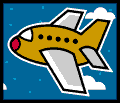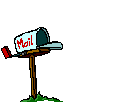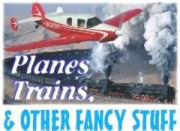
|
TRAINS... Collecting toy trains. |
 |
PLANES... See my plane and read about my flying adventures. |

|
OTHER
FANCY STUFF... Genealogy and my summer hangout |

|
See home page for E-mail
|
Want to Pump Fuel?
How it was in 1948
By
Thomas Arsenault
Part One - The Problem
No, I did not want a fuel pump, but the FAA says, "you have to have one". I have a 1948 (first year) rag wing Cessna 170. I bought this plane in June of 1995. I had decided the fall before to get back into flying after 34 years of not flying. I decided I wanted to fly a tail dragger for reasons that are part of another story. I took and passed my medical. Then, I found an instructor that had a '48 polished chrome C170 and after 10 hours I had my BFI, tail dragger endorsement and no plane to fly. That was when I decided to look for a plane. At first I wanted a Stinson 108, but when I found N4163V I really liked it. The plane has a very distinctive red, white, and blue paint scheme. Some people call it "Uncle Sam". At any rate, I purchased the plane in June of 1995 and had the owner fly it to Anoka MN for me. I spent many hours learning to fly it (and am still learning), going over ever part of it, going over the log books and trying to understand the history of this 50 year "old girl" as one of the previous owners calls her.
During this time I kept looking at the fact that it did not have the 2 drains under the engine that my instructor's plane had and, while my plane had a fuel pressure gauge, it always read zero pressure. With further research into the logbooks, I found an entry in the airframe book that had, among a lot of other information, the words "changed engine". Now this seems like an event in a plane's history that would warrant more comment than just two words. I know that no problems will show up like "I crashed that plane" or some such comment but I would expect more than just two words. The engine logs show history back to 1955 for an O-300A. The engine logs even show the test stand checkout before Cessna sold the first plane the engine was in. In March of 1961, an entry in the engine logbook says "installed in 4163V." Well, at least the installation was recorded even if the reason for the engine change is not now known.
So I now figured out that the plane does not have an original C-145 engine. I figured that as the O-300A did not have to have a fuel pump, then my plane did not need a fuel pump. NOT TRUE. Further research and talking to many 170 drivers, Tom Hall - parts coordinator, Cessna engineers and Duane Shockey, convinced me that I needed and wanted a fuel pump. The fuel pump is required in the 1948 Cessna 170's because of the routing and placement of the fuel lines. The fuel lines come out of the middle of the tanks on each side and are routed down the front of the door support, then under the floor to the fuel tank selector and the on to the gasolator. The best explanation I can find for why the 1948 Cessna 170 had a fuel pump in the first place is:
There are times and flight configurations including the amount of fuel, pitch and climb of the airplane, that the head pressure, (the weight of the fuel column from the tank to the engine) would be less than the required pressure created by a 41-inch column of fuel. The amount of pressure created by less than a 41-inch column would not be sufficient to overcome an air blockage. (Possibly created by sucking air from a very low tank.) Thus the 1948 Cessna 170 required a fuel pump.
Now my plane had been flying for 31 years without a pump and without a problem. I thought that I would just continue, however I found out that if I had an accident or an incident, the missing pump would surely be identified as a contributing factor. I also heard that insurance companies don't like to pay claims and may feel that the plane was "not airworthy". Well, I decided that I was going to have to fix the problem by putting a fuel pump in. Now - what kind? Original, electric, or what?
Part Two - The Expensive Solution
What kind indeed! Duane Shocky has been working this problem and wanted to use an electric pump but I finally decided on a direct replacement. Then I would not need a 337 or anything other than a log book entry. This seemed too easy. Something has to go wrong doesn't it?
I talked to my mechanic, and he said that he could get all the piping and fittings and that I should get the fuel pump and something called a check valve. Well, I started on the fuel pump. After some discussions with a number of aviation supply houses I settled on Chief Aero as the place to buy the pump. The part number is AE 9687 TMC40585 and Chief said that they could supply it for $325.00. Well that didn't sound too bad. What was that? There is a core charge of $100.00 if you don't have an old pump to send in. I didn't have one so I had to pay that in addition to the pump price. (Now this pump on an automobile would cost about $54 or some such thing but we have to pay for small quantities and for many years of shelf storage. How old is the plane?) I ordered it on June 24, 1997 and it was on its way (isn't VISA nice.) Remember now June 97 and I have $441.40 into the project.
Next on the list was this check valve. I have since learned what a check valve is. It allows flow in one direction and stops flow in the opposite. I learned this from the pump system I have at the lake that once the water is pumped out of the ground it isn't suppose to go back in. So I started to look for the check valve that the original C170 had, part number 47566 1/4D. No one knew where to get them. (Special made is going to be expensive!) I call and call around the country. I get a copy of a letter from Cessna in 1952 where it says that P/N 483 1/4D1 ¼ is an alternate to the original part. Finally I hear of Parker Valve Company. Why, - that's the name of the company that made the original. Maybe they still have some and maybe, just maybe, the shelf rent won't have been too high. No Parker in the United States of America that I can find through the Internet Yellow Pages. Finally I find a Parker/Hanlon and call them. They have the check valve, but I can not buy it from them. They give me the name of a company that handles distribution in the Minneapolis St. Paul area. I gave them a call. Sure we can order it for you and cost is $60.00. I tell my mechanic so he can order it with the rest of the parts.
Finally in early October all the parts are in and we (my mechanic and I) schedule the installation. October 15, 1997 I take the plane in for 2 days. The next evening I go in to retrieve my 'pumping plane'. My mechanic said he had some trouble with getting the check valve in properly but that it was done. The charges are as follows:
Parts 289.58 - this is piping, check valve and fittings.
(Check valve is now up to $96.00)
Labor 367.50
Tax 18.82
Total 675.90
Now why is the valve more money? My mechanic says that that is what they billed him. So that is what I pay. Log book says " Installed rebuilt fuel pump part # 9867 or TCA #40585, replaced fuel lines, check valve, pn # 453-1/4-D2-6 according to xxx xxxxxx of Cessna Aircraft. Test run no leaks. "
Great huh!
Previous payment for Fuel pump $441.40. So now I have $1117.30 into the project.
This is great. Fuel pumps, plane flys, fuel pressure is about 4 lb. when flying and about six on start up. This is the gauge that sat idle for 31 years.
Next problem. Fuel leaks. I find that some of the connections leak a small amount of gas down onto the lower cowl. I try to tighten it myself. Does not fix it. I have it fixed on 10/31/97. I discuss with my mechanic that the check valve that was recommended by Cessna may not be correct. He says that with 6 lb. cracking pressure, that if the fuel pump fails the column of gas will never open the valve. Well - Great, I am pumping and flying but if I stop pumping I also stop flying.
I order another check valve that has ¼ lb. cracking pressure. This they tell me will cost $60.00. Humm. This is what the first one should have cost. When the bill comes it is for $120.00. I call the distributor. Oh my - they FORGET to give me my discount. (Could this be standard procedure?) Yes they will credit me with the discount.
On February 23, 1998 the cost of labor to replace 6 lb. to ¼ lb. check valve is $63.00 including a $3.00 fee for the Metropolitan Airport Commission. I now have $1213.15 into the project.
At this writing (12/2/98) everything seems to be OK.
Summary
Time duration - June 97 to March 98
Costs
Pump $325.00
Core charge $100.00
Shipping & Ins. $ 16.40
Check valve $ 96.00
Correct Check Valve $ 60.00
Piping and fittings $193.58
Labor $367.50
Tax $ 18.82
Labor 6 lb. to ¼ lb. $ 63.00
-------------------------------------------
Total $1240.30
